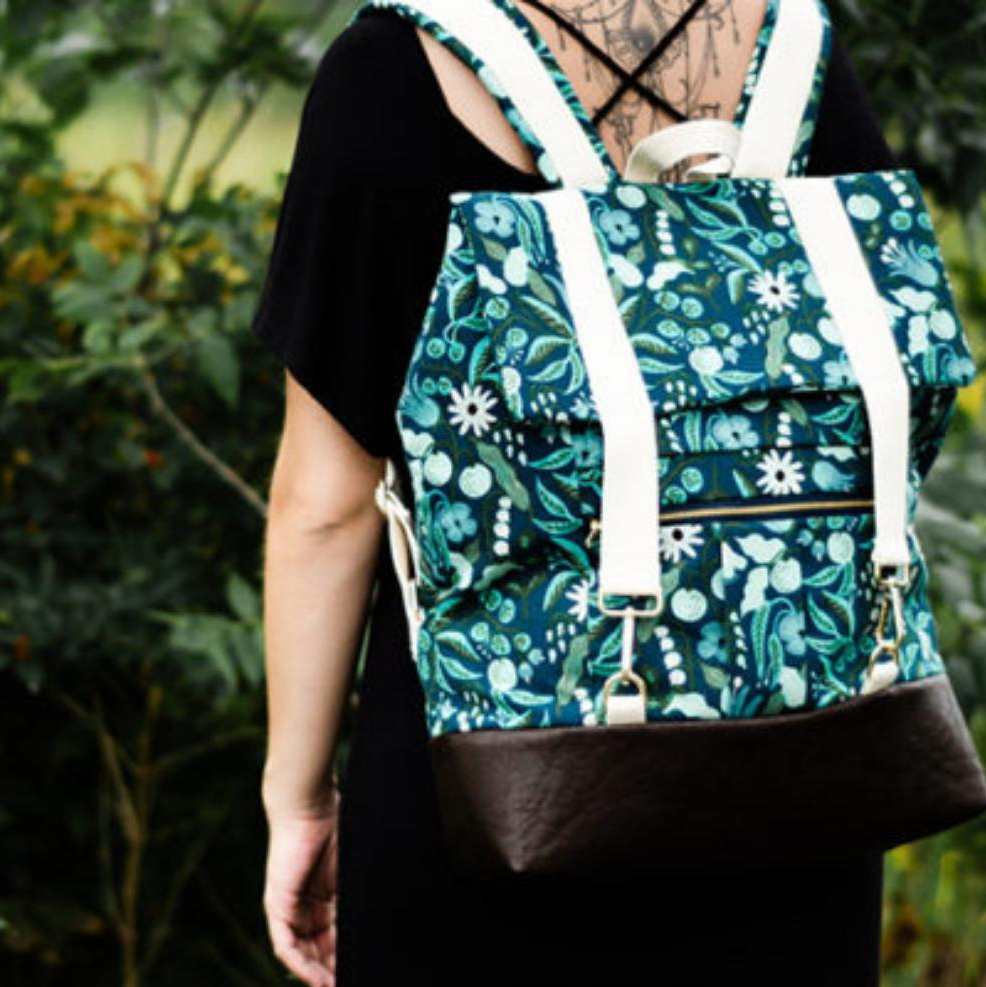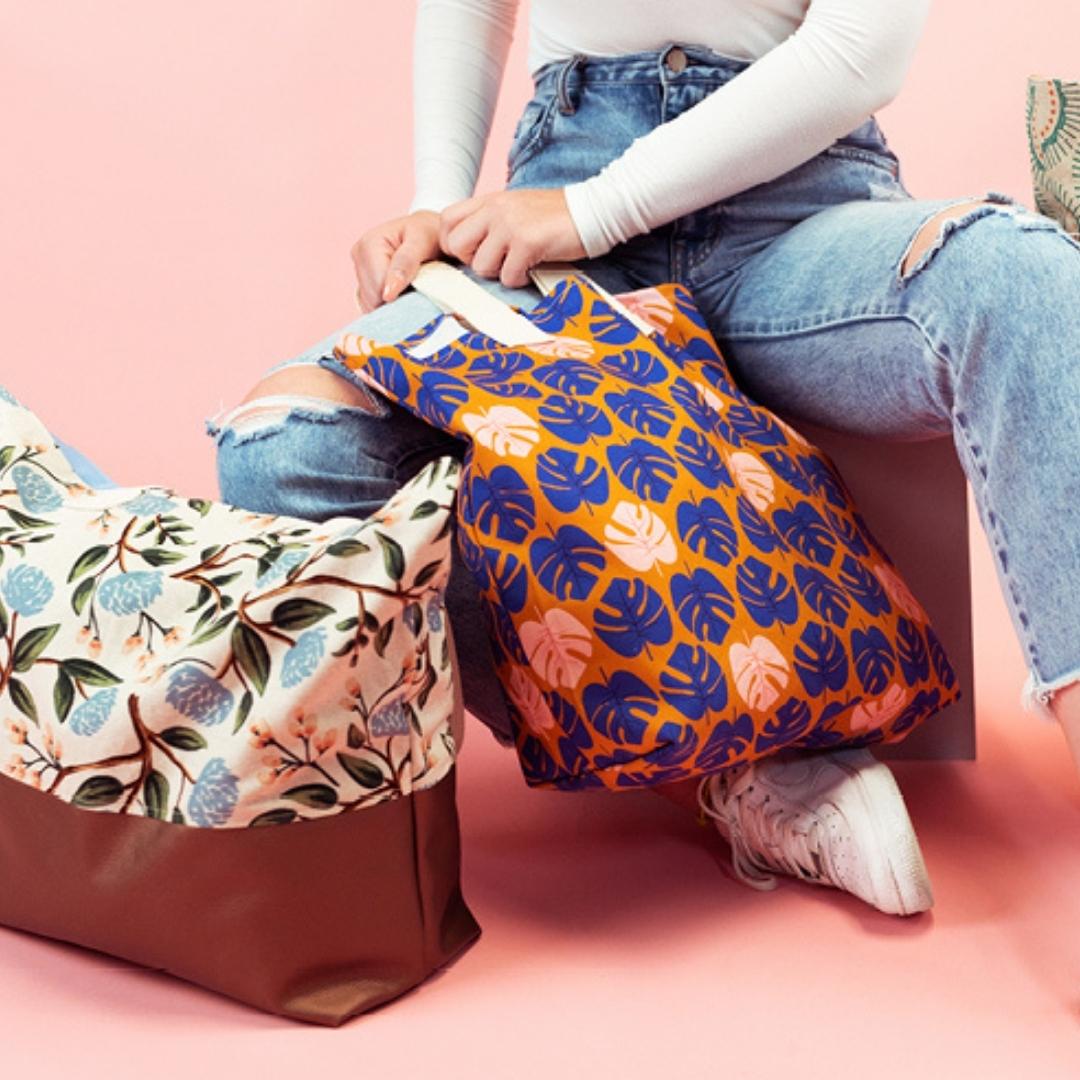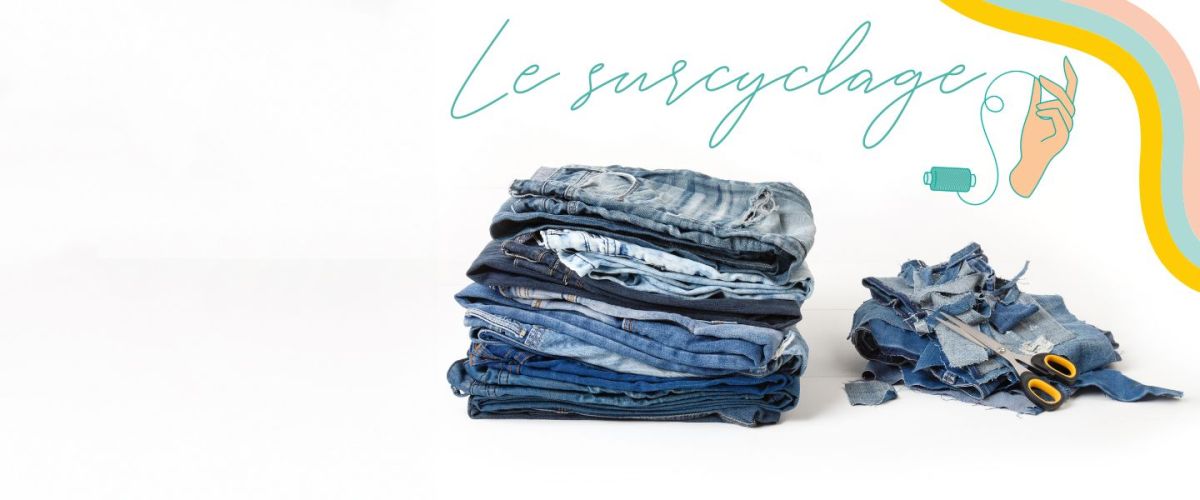As part of Semaine mode de Montréal, we decided to talk to you about upcycling. This trend that emerged a few years ago encourages us to create in a different way: instead of making garments out of new fabric, you use existing clothing or textile products.
What is upcycling?
Making something new out of something old. This familiar expression sums up what upcycling is all about.
Used objects are given a new life. Unlike recycling, the raw materials are not transformed in the making of the product; for example, our Repreve denims are made in part from recycled polyester, which is produced by melting plastic bottles and extruding a yarn from which the fabric is made. This process uses water and energy to achieve the end result, Repreve polyester. In upcycling, since a ready-made garment is used, the use of resources is minimized.


A few ideas for upcycling
Do you have a piece of clothing that no longer fits, but you still love it and don’t want to get rid of it? Upcycle it! Here are some ideas for sewing projects you can do at home with the clothes and textiles you no longer use.
1. Use curtains or tablecloths to create clothes:
Like Scarlett in Gone with the Wind and Maria in The Sound of Music, you can easily sew yourself a dress, skirt or other piece of clothing that requires several yards of fabric using curtains or sheets. Since these products are rectangular and long, they can be treated like a yard of store-bought fabric. Some curtains are made of thick fabric, so they could even be used for jackets or coats.
We love the retro dress that Mélyna, our Marketing Project Manager, made for herself using vintage curtains purchased at Village des Valeurs. Seen on her Instagram : Gorgeously Vintage


2. Use a pattern with several small parts to it:
If you want to use your old clothes rather than curtains, one solution is to choose a pattern with several small sections. You will be looking for patterns that are a bit more complex, but the pieces will be easier to place on a trouser leg, for example. If you have several garments of the same type, you could use them in the same project by colour-blocking. In this technique, the placement of each colour of fabric is very important to get a balanced result.
You may want your upcycled garment to look like a ready-to-wear piece, but you can also use the details of your original clothes to create an original result. We love this jean jacket that Helen from Helen’s Closet made from jeans and denim scraps: The lovely shoulder details at the top of her sleeves are actually the pockets of the jeans she used!
Here are some examples of multi-piece patterns that could be used for an upcycling project:
3. Make patchwork-style clothing:
If you want to make a loose-fitting garment, such as a flared dress or skirt, you could put several pieces of fabric together to create a new patchwork piece. For a quilt effect, use clothes or textile items with a variety of fabrics, textures and colours. For a more muted look, use garments that have similar textures, colours or fabrics.
A patchwork is also a good way to use your fabric scraps! After several projects,you may have a lot of small pieces that you don’t know what to do with. Piece them together to create a new one-of-a-kind fabric! This is what the author of the blog La Magie du Fil did with fabric scraps purchased at The Fabric Club.


4. Make children’s clothing:
Clothing for young children, especially babies and toddlers, often requires small amounts of fabric. The pieces of a children’s pattern are so small that they easily fit in an adult garment. For example, children’s sleeves can be cut out of the sleeves of an adult shirt. A child’s garment is also the perfect project for the remaining 50 cm of fabric at the end of a sewing project! Here are some ideas for a children’s pattern that you can upcycle your clothes with:
5. Make undergarments:
To reuse your jersey or other stretchy knitwear, making underwear, such as panties or briefs, is a great project. As with children’s clothing, underwear is often made up of small pieces that fit very well into clothes. Depending on the size of the pattern sections, you can make several pieces of underwear out of one T-shirt. If you have a lot of cotton or bamboo jersey scraps, this is also a great way to use them! We like Jalie patterns for underwear. In addition to being a Québec-based company, Jalie sizes from children to adults in all their patterns! Here are some suggestions:
6. Make accessories:
You can reuse cotton products, canvas or old raincoats to make backpacks, pencil cases and much more! These projects allow you to reuse items that are more damaged or trickier to upcycle into other clothes. You can take advantage of the properties of outerwear to make a waterproof bag!
We have lots of free patterns to help you create the perfect accessories:






7. Make a T-shirt quilt:
Over the course of a lifetime, you accumulate a lot of T-shirts that have sentimental value, whether from concerts, sporting events, trips, or other occasions. It’s easy to end up with a drawer full of shirts that you don’t wear, but that remind you of good times. A fun way to give them a second life is to turn them into a quilt! Simply cut the shirts into squares, keeping the images or logos, interline each piece and assemble them together to make the top of the quilt. We recommend the lightweight micro-weft or skinfuse knit interlining, which will stabilize the shirt fabric without stiffening it.





















